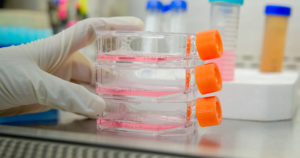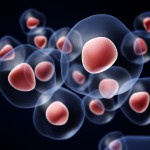
Many cell biology researchers can name their department’s or institutions’s “cell culture wizard”—the technician with 20+ years of experience whose cell cultures are always free from contamination, exhibit reliable doubling rates and show no phenotype or genotype weirdness. Cell culture takes skill and experience. Primary cell culture can be even more difficult still, and many research and pharmaceutical applications require primary cells.
Yet, among the many causes of failure to replicate study results, variability in cell culture stands out (1). Add to the normal challenges of cell culture a pandemic that shut down cell culture facilities and still limits when and how often researchers can monitor their cell culture lines, and the problem of cell culture variability is magnified further.
Treating Cells as Reagents
A good way to reduce variability in cell-based studies is to use the thaw-and-use frozen stock approach. This involves freezing a large batch of “stock” cells, then performing quality control tests to ensure they respond appropriately to treatment. Then whenever you need to perform an assay, just thaw another vial of cells from that batch and begin your assay—just like an assay reagent! This approach eliminates the need to grow your cells to a specific stage, which could take days and introduce more variability.
Continue reading “Maximize Your Time in the Lab: Improve Experimental Reproducibility with Thaw-and-Use Cells” One piece of advice you will get from our Technical Services and R&D Scientists with regard to cell-based assays is to pay attention to what you are doing. Sounds obvious, but sloppiness can easily enter into the equation. Do you always count your viable cells with a hemocytometer and trypan blue exclusion before you split a culture? Do you always make sure that each well of your plate or plates contain the same number of cells? Two of our scientists, Terry Riss and Rich Moravec, published a paper demonstrating how decisions you make in experimental setup can ultimately affect the results you obtain. A natural consequence of this is difficulty replicating experiments if you didn’t pay attention to the details during the initial experimental setup.
One piece of advice you will get from our Technical Services and R&D Scientists with regard to cell-based assays is to pay attention to what you are doing. Sounds obvious, but sloppiness can easily enter into the equation. Do you always count your viable cells with a hemocytometer and trypan blue exclusion before you split a culture? Do you always make sure that each well of your plate or plates contain the same number of cells? Two of our scientists, Terry Riss and Rich Moravec, published a paper demonstrating how decisions you make in experimental setup can ultimately affect the results you obtain. A natural consequence of this is difficulty replicating experiments if you didn’t pay attention to the details during the initial experimental setup. 